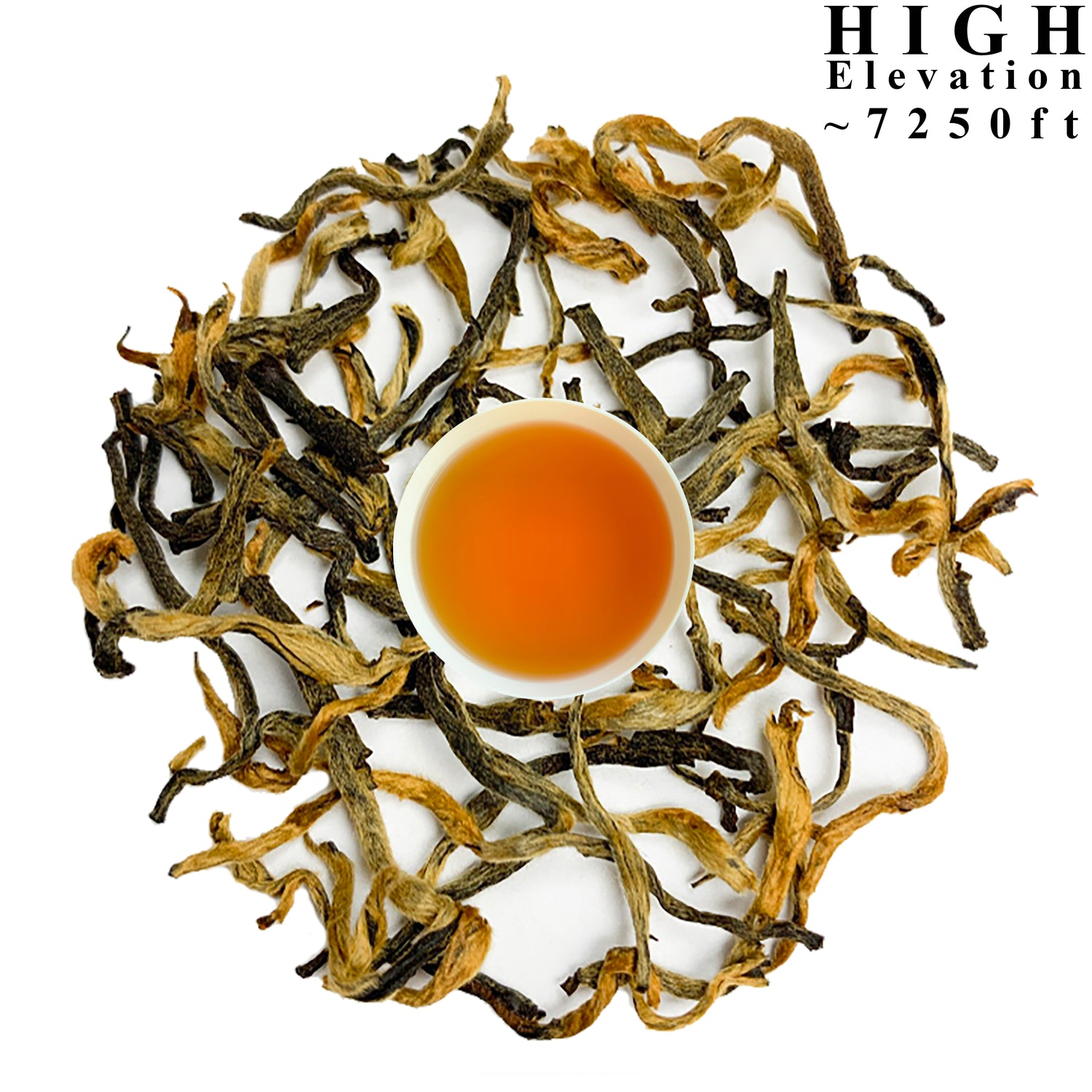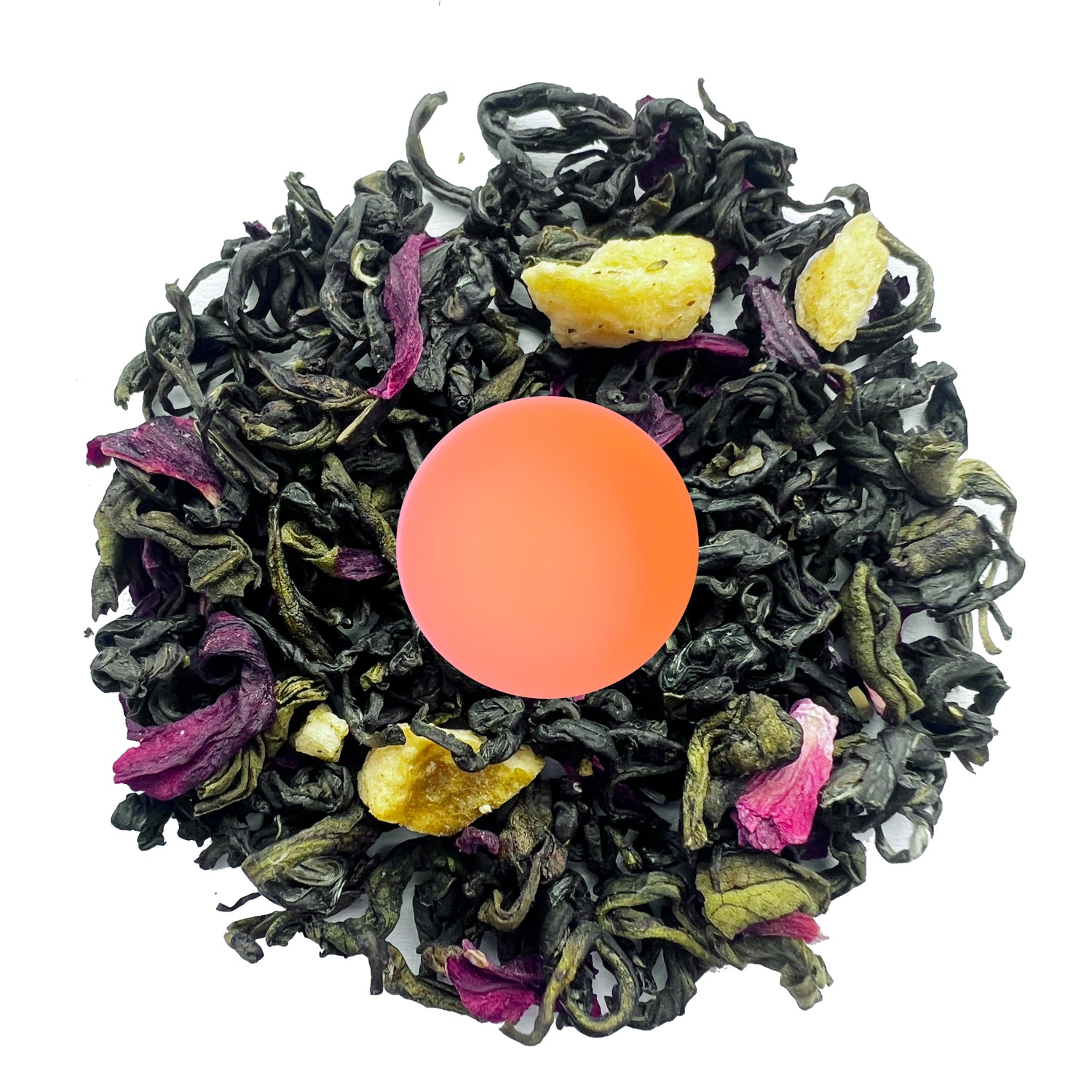
What Does Green Tea Taste Like? A Flavorful Guide for Curious Sippers
Green tea is more than just a health drink—it’s a whole experience. While it’s often praised for its benefits like boosting energy, aiding digestion, and improving brain function, the taste of green tea is where many new drinkers pause. Is it bitter? Is it sweet? Earthy? All of the above?
If you’re curious about what makes green tea taste the way it does—or you’ve had a cup that was a little too bitter for your liking—this guide is for you.
As tea enthusiasts, you may already know green tea is popular as a “superfood” thanks to its numerous health benefits, including improved brain function, fat burning, and a lower risk of cancer and other diseases. Another fascinating characteristic of this beverage is its unique taste. Whether you are a first-time drinker or a regular green tea drinker, its flavor can arouse curiosity as it is uncommon in any other type of tea.
In this blog, we will shed light on the flavor profile of green tea, including the primary taste components and how they combine to create the unique taste of this beloved beverage. Additionally, we will explore common types of green tea and their distinctive taste profiles. Plus, we will share tips on how to make green tea taste good. So, whether you are a regular green tea drinker or simply curious about the flavor of green tea, keep on scrolling to discover everything you need to know about what green tea tastes like.
So, What Does Green Tea Taste Like?
Green tea has a unique, layered flavor profile that’s often described as:
- Grassy or vegetal
- Slightly sweet
- A little nutty
- Sometimes bitter or astringent
- Smooth and umami-rich when brewed properly
But the exact taste depends on how it’s grown, processed, and prepared. For example, Japanese green teas like matcha or sencha tend to be more umami-forward and vegetal, while Chinese green teas can be more floral or nutty.
Matcha: The Bold Side of Green Tea
If you've ever had a matcha latte, you’ve tasted one of the boldest versions of green tea. Matcha is made from powdered green tea leaves, whisked into hot water or milk. It’s thick, creamy, and has a strong, grassy flavor—sometimes with a touch of sweetness or even a hint of seaweed.
Not all matcha is created equal, though. High-quality, ceremonial grade matcha tends to be smoother and naturally sweeter, while lower grades (used for cooking) are more bitter.
Green tea's got umami?
Yes, green tea can be umami too. Thanks to an amino acid called glutamate, which is present in the tea leaves, green tea can have a savory and slightly salty taste.
Why Does Green Tea Sometimes Taste Bitter?
If your green tea tastes too bitter or harsh, the culprit is usually the water temperature or brewing time.
Here’s why:
- Boiling water can burn the delicate tea leaves, releasing more tannins (that bitter stuff).
- Steeping it too long? Same issue.
Ideal brewing tip:
Heat water to about 175°F (80°C) and steep green tea for 1–2 minutes only. You’ll taste a world of difference.
Tips to Make Green Tea Taste Better
Want a smoother, tastier cup of green tea? Try these tips:
1. Don’t Use Boiling Water
Let your boiled water cool for a minute or two before pouring. This preserves the tea's delicate flavors.
2. Add a Slice of Lemon or a Drizzle of Honey
Natural additions like lemon juice or honey balance bitterness without overpowering the tea.
3. Try It Iced
Cold-brewing or chilling green tea makes it lighter, sweeter, and incredibly refreshing.
4. Make a Matcha Latte
Whisk up some matcha powder with oat or almond milk for a creamy, energizing treat.
5. Use Quality Leaves
Loose-leaf green tea usually tastes fresher and cleaner than old tea bags.
Inspired by the Japanese Tea Ceremony
The Japanese tea ceremony isn’t just about drinking tea—it’s about mindfulness, respect, and attention to detail. By embracing some of these practices, like using the right tools or savoring the moment, your daily cup of green tea can become a calming ritual, not just a health habit.
Green Tea Facts
- The study according to 2004 reported that the repeated consumption of green tea and encapsulated green tea extracts for one to four weeks has been demonstrated to decrease biomarkers of oxidative status.
- In 2011 it was observed in a study with 40 male smokers in China and 27 men and women (smokers and non- smokers) in the United States, that oxidative DNA damage, lipid peroxidation, and free radical generation were reduced after consuming 6 cups/day of green tea for seven days.
- According to the study, it was concluded that habitual moderate-strength green tea or oolong tea consumption for 1 year significantly reduces the risk of developing hypertension in the Chinese population.
- Data on green tea reported in 2018 shows that green tea may be protective against coronary atherosclerosis in men, but not in women.
Different Types of Green Tea Flavors
In the market, you have options to choose from different types of green tea, each with a unique flavor and aroma. Here, we have compiled the common types of green tea and their flavor profiles. Let’s explore:
Sencha Green Tea
Sencha green tea comes from Japan and is known for its grassy, vegetal taste
profile. Widely consumed in Japan, this tea is recently gaining popularity globally for its unique taste. The flavor of Sencha green tea is often described as fresh, crisp, and slightly nutty, with a hint of umami. The tea leaves are grown in full sun, which gives them a rich flavor and aroma. After harvesting, the tea leaves are steamed to prevent oxidation and preserve the green color. Then, they are rolled and dried, which further enhances the flavor and aroma.
Matcha Green Tea
Matcha green tea also comes from Japan. However, it is quite different from
Sencha green tea. Matcha is a bright green powder and has a special kind of sweet taste. The flavor is earthy with a natural sweetness. The unique taste comes from the way it is grown. The tea leaves are kept in the shade, which makes the plant produce more chlorophyll and amino acids that give matcha its sweetness.
Jasmine Green Tea
Originating in China, Jasmine green tea is a popular variety of green tea that is infused with the delicate aroma of jasmine flowers. It offers a delicate floral aroma and a sweet, refreshing taste with a subtle bitterness. The harvested tea leaves are scented with fresh jasmine flowers during the production process, which gives the tea its distinct jasmine fragrance and flavor.
How to make green tea taste good?
Green tea's great for your health, but not everyone loves the taste right away. Don't worry, making it taste good is easier than you think! Here’s how to enjoy your green tea.
Pick the Good Stuff
Start with good green tea. Loose leaves are usually better than tea bags, as they're fresher and have more flavor. Check it out here if you need the best quality green tea.
Adjust Brewing Time
Avoid steeping green tea for too long as it can result in a bitter taste. Likewise, be careful not to steep it for too little time as it can result in a weak taste. Steep green tea for 2 to 4 minutes in water heated to between 158 to 195 degrees Fahrenheit. For a stronger flavor, you can steep it for up to 5 minutes. Be attentive to the steeping time and temperature as they determine the taste of your green tea.
Add Honey or Lemon
Adding honey and lemon to your green tea is another excellent way to enhance the flavor of green tea. If you find your green tea bitter and looking to add sweetness, then honey is a great additive to add. On the other hand, if your preference is an earthy taste with a tangy flavor, you can always go for lemon as an ideal additive. So, you can just add a teaspoon of honey or a squeeze of lemon to your cup of green tea to blend its flavor as desired.
Use the Right Amount of Green Tea
Generally, 1 to 2 teaspoons of green tea are adequate for a cup of the best-tasting green tea.
Pair with Certain Foods
Green tea pairs great with certain foods and you can use this to enhance the flavor. Pair green tea with foods that have subtle flavors, such as steamed fish or vegetables. The light flavor of green tea complements these foods without overpowering them. You can also try pairing green tea with sweet foods, chocolate desserts, or fruits to balance the bitterness in your green tea.
To summarize you can try these steps:-
- Get 10 oz filtered water and bring it to a boil.
- Remove the water from boiling & let it sit for 1 min so it cools down to about 195 F.
- Add about 1.5 or 2 teaspoons of leaves into a clear glass or in your Steeping cup.
- Pour the hot water into your clear glass or steeping cup containing tea buds.
- Let it steep for 3 minutes.
- The color is bright golden. Strain and enjoy every sip of it.
- Repeat for the second infusion, add 1 min steep time.
Final Sip: Enjoy Green Tea Your Way
Whether you're sipping hot matcha in the morning or cooling off with iced green tea in summer, remember—good flavor starts with the right preparation. Don’t settle for bitterness when your cup can be smooth, earthy, and even sweet.
Next time someone asks, “What does green tea taste like?” you can tell them: it tastes like nature, focus, and a little bit of zen.
FAQs
Does green tea have a good taste?
Green tea has a unique and complex taste profile that can range from delicate and grassy to nutty and slightly bitter. High-quality green tea brewed at the right temperature and steeping time provides a good taste.
Is green tea sweet or bitter?
Green tea can have a slightly bitter taste due to its natural tannins, but high-quality green teas often have a delicate sweetness. The taste can vary depending on the type and quality of the green tea.
How do you drink green tea if you don't like it?
To enhance the taste of green tea, you can add honey for sweetness or lemon for a tangy flavor. Pairing green tea with different foods can also enhance its taste. Trying different varieties of green tea may help you find a flavor you like.
Does green tea taste different from regular tea?
Green tea has a more delicate, grassy, and slightly vegetal flavor compared to regular tea, which is often made from fermented tea leaves from the Camellia Sinensis plant, and has a bolder taste.
How to make green tea taste good?
Start by using high-quality leaves and steep them in water that's hot but not boiling, around 160-180°F. Steep for 2-3 minutes to avoid bitterness. Enhance the flavor with a dash of honey, a slice of lemon, or a few fresh mint leaves. Experiment with cold brewing or different types of green tea to find your perfect cup.
Is green tea good for beginners?
Green tea is a great choice for beginners looking for a uniquely flavored tea. However, start with small amounts and gradually adjust as you form a habit.
Can you add milk to green tea?
Though green tea is typically enjoyed without milk, you can add milk to alter the flavor. However, note that it can reduce the health benefits the beverage has to offer.
Conclusion
Green tea has a unique and complex taste profile with subtle hints of grassy, nutty, and floral notes. We encourage you to try green tea yourself to fully understand its taste profile. If you find the green tea taste unsatisfying, you can always consider our tips to enhance the taste experience.
Additionally, the taste profile varies depending on the quality of the green tea you are using. To experience the best flavor from the finest grade tea, we invite you to explore green tea from Danfe Tea. At Danfe Tea, our green tea is sourced from the pristine Himalayan regions of Nepal, which adds a distinctive Himalayan aroma and deep flavor that is uncommon in other ordinary teas.
Buy the Finest Loose-Leaf Teas from the Himalayas
Danfe Tea brings you the finest loose-leaf teas in the Himalayas. With robust flavors and many health benefits, we invite you to try our high-quality black teas. These teas are available in 2.5-3.5 oz or 1 lb variants. We also offer monthly subscriptions to these products.










